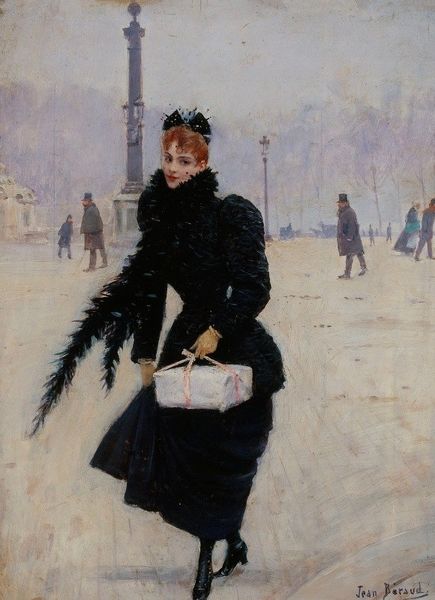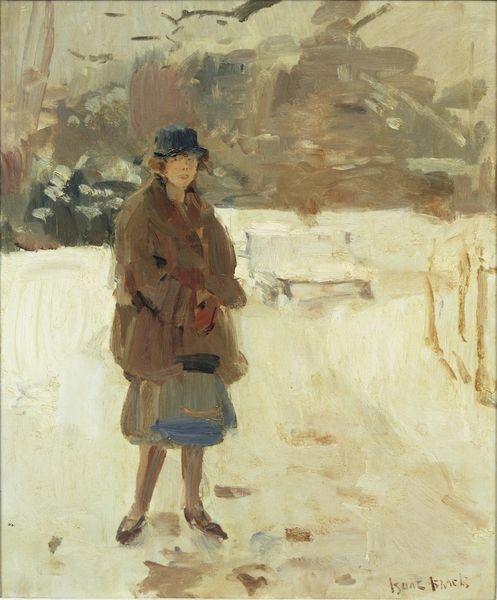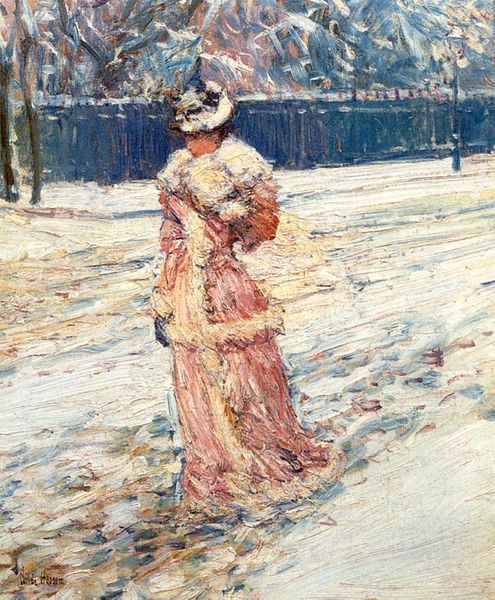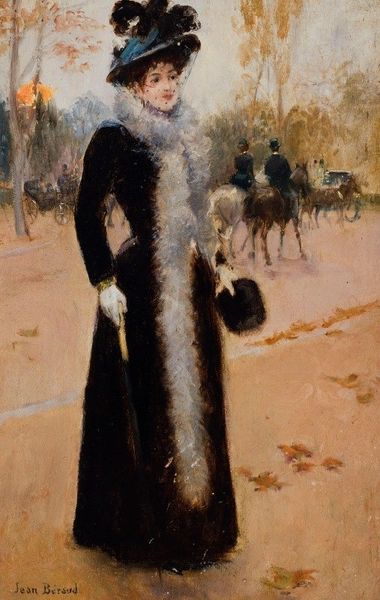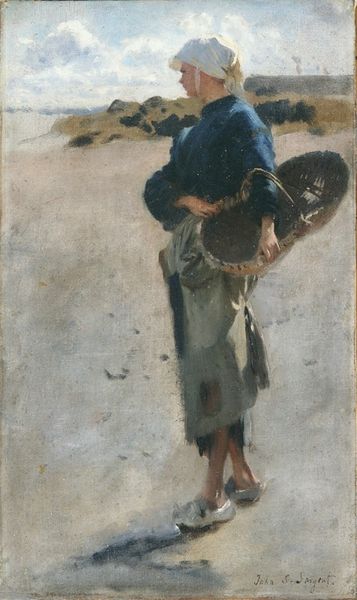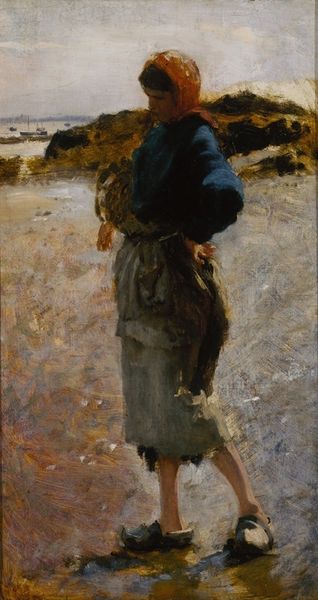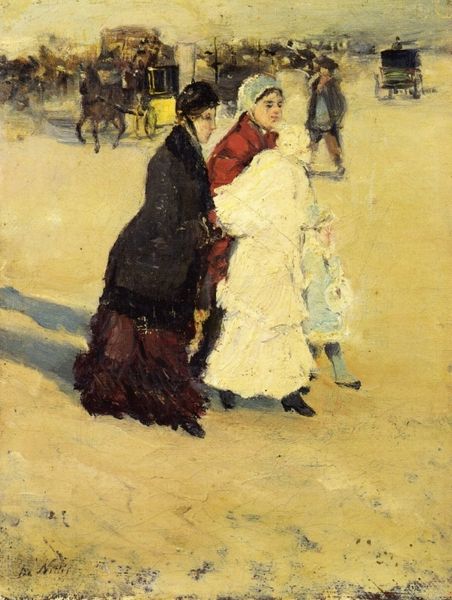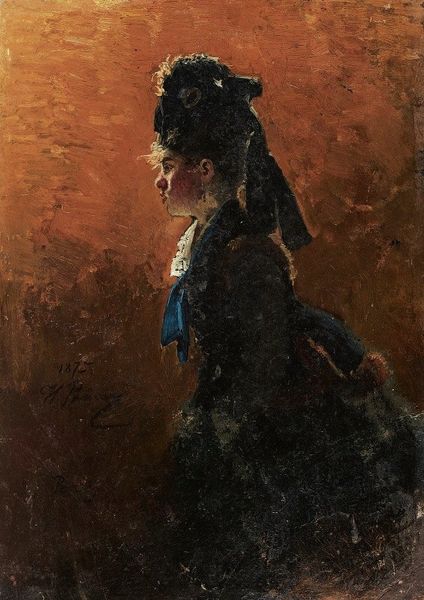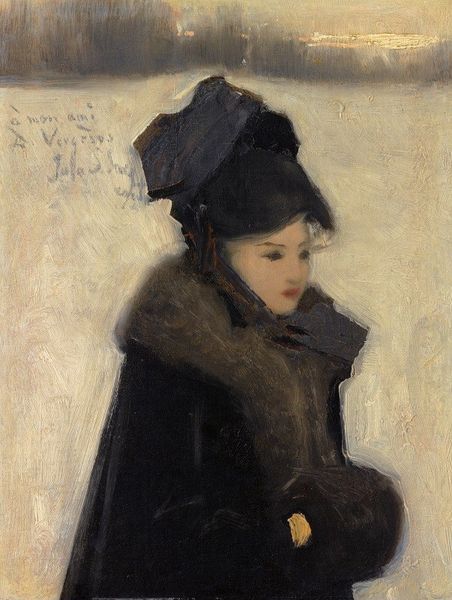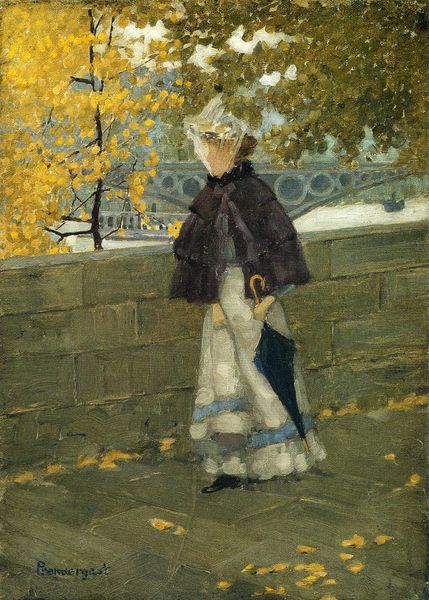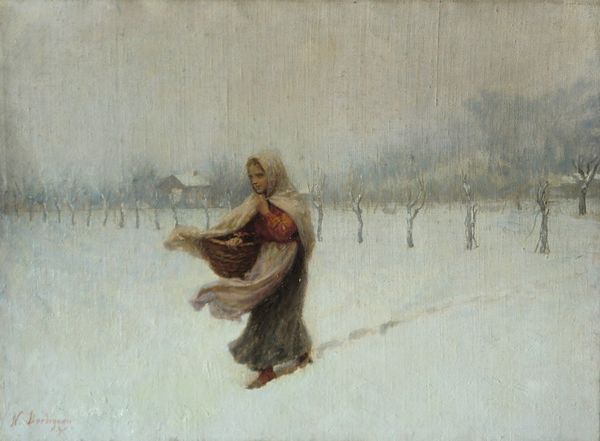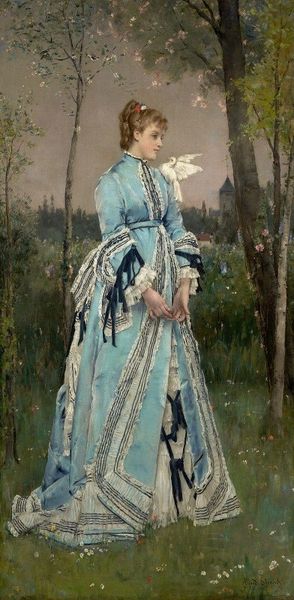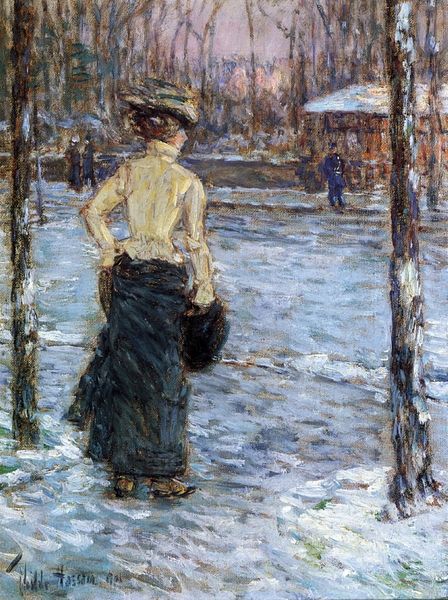
#
figurative
#
water colours
#
possibly oil pastel
#
oil painting
#
acrylic on canvas
#
coloured pencil
#
underpainting
#
painting painterly
#
watercolour bleed
#
watercolour illustration
#
watercolor
Copyright: Public Domain: Artvee
Curator: It's like stepping into a snow globe! I find the colour palette so incredibly gentle, soft, and quite beautiful, and this creates a very appealing aesthetic. Editor: You're absolutely right; there is an undeniable softness. We're looking at "The Winter Walk" by Edmund Blair Leighton, created in 1904. Notice how the artist renders the textures, like the fur muff and trim—you can almost feel the weight and the warmth of these expensive textiles. Curator: Absolutely. I see here Leighton employing what must be several layers of paint to achieve the desired effect, to depict what appear to be highly-manufactured items within the sitter’s outfit, speaking of wealth and trade. Were such goods mostly accessed by the wealthier members of society, or those tied to colonial exploitation, at that time? Editor: Indeed, paintings such as this played a role in constructing ideas around gender and social class during the Edwardian era. A genteel woman presented elegantly signals a certain lifestyle. This was the height of the British Empire, and displays of wealth such as this speak to the success, real or perceived, of this powerful state. Curator: And notice how the artist, who could very well have depicted a winter’s grey day, adds a gentle rose hue. The way Leighton carefully employs a more attractive appearance through this delicate choice of paint hints at the societal expectations regarding presentation, and labour, and maybe even commerce involved with sourcing and implementing the dyes of the pigment itself. Editor: Yes, there is also, I would venture, a degree of fantasy here. This winter scene feels idealized. Leighton’s paintings provided, for the emerging middle classes of the Edwardian era, romanticized glimpses into history that spoke to idealized visions. The commercialised construction of national identity itself perhaps. Curator: On reflecting more deeply on it, perhaps that is where the appeal lies. It prompts us to question who made such attire possible, but we can admire both skill and social critique together here. Editor: Yes. Examining the details of garments and socio-historical settings such as these, they provide compelling perspectives through which to investigate art history's enduring appeal and intricate web.
Comments
No comments
Be the first to comment and join the conversation on the ultimate creative platform.
